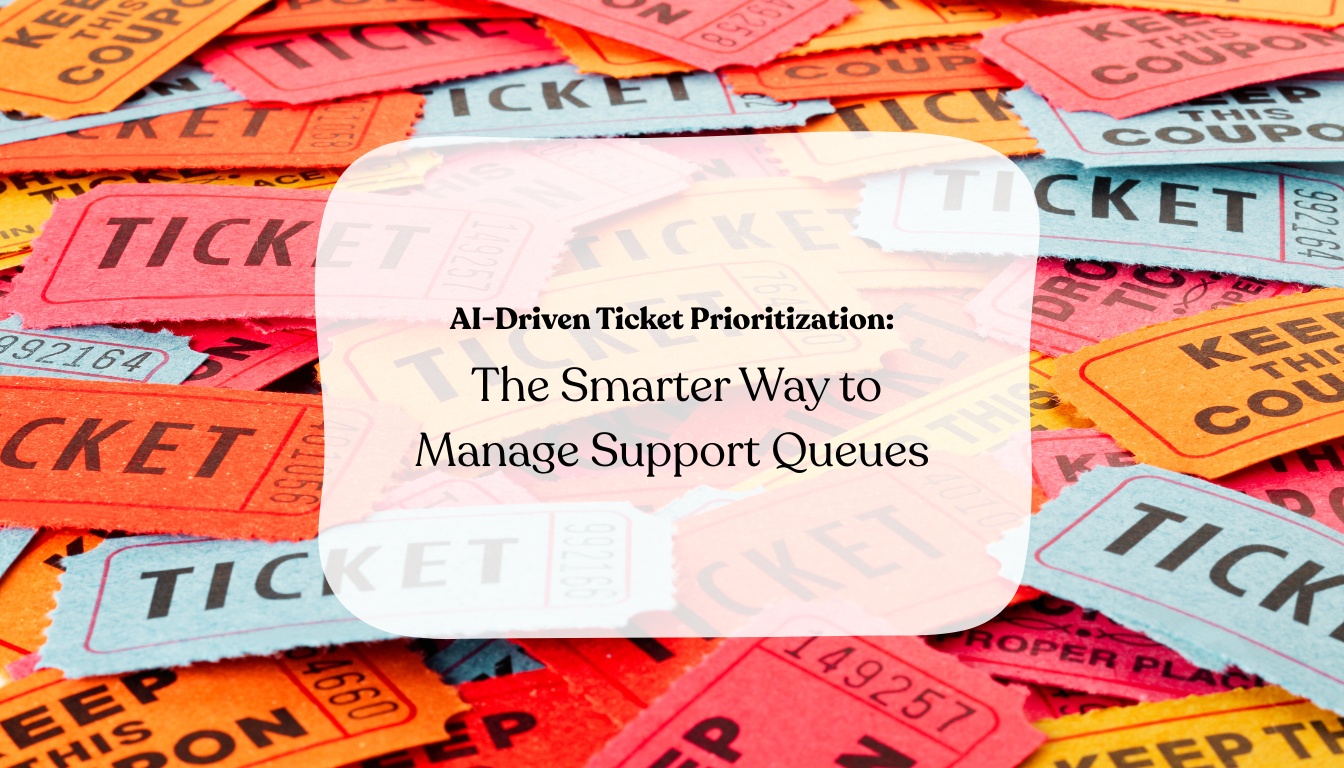Agent Handbook
Best practices for customer support agents
Main Goal of Customer Service: Delighting the Customer
What is the primary goal of a live chat agent? To make the customer happy, of course! Sometimes that will come easily. Sometimes it will be a challenge. Here is a quick guide for best practices best for customer service agents.
Spelling and Grammar Use
“A dangling participle is something “up with which I will not put.”
– Winston Churchill
Proper grammar is integral to conveying what you are trying to say. Make sure spelling, punctuation, and usage are all correct. Watch out for run-on sentences and fragments. These are fine in conversational speech, but will seem unprofessional in chats.
Accurate typing will make you seem intelligent, authoritative, and trustworthy. On the other hand, even a small typo or grammatical error can make you lose your credibility.
Always utilize your spell checker and, if possible, use a grammar checker, such as Grammarly.
Proofread your answers before sending. Practice makes perfect, so use resources and tools that make you a better writer. You can also test your spelling and grammar skills with an online game, such as HelpSquad’s Live Chat challenge.
Staying Positive
“There are two ways of spreading light; to be the candle or the mirror that reflects it.”
– David W. Augsburger
 Be sincere with your attitude. The best way to show positivity is…well, to be sincerely positive. That can be a challenge if you are regularly dealing with cranky, irritated customers, but you must keep the mood light to create a productive environment for problem-solving.
Be sincere with your attitude. The best way to show positivity is…well, to be sincerely positive. That can be a challenge if you are regularly dealing with cranky, irritated customers, but you must keep the mood light to create a productive environment for problem-solving.
Quick ways to adjust attitude
- Smile – a conscious effort to put a smile on your face instantly lifts your spirits. The practice is proven to be extremely beneficial both socially and health-wise.
- Practice Mindfulness – feel your body breathing in and out. Count ten your breaths to ten. Doing this, especially in moments of high stress, can help calm you down, ground you, and refocus you. Mindfulness can do wonders for your mood and overall outlook.
- Stretching – Move – take breaks often (at least once an hour). Sitting still for long periods can bring you down. It’s also bad for your posture. Stretch. A lot. Get up and move.
- Music – Use music – if you can, add a soundtrack to your day. Put something upbeat as your background music. If lyrics distract you, use instrumental tracks. Even if you keep the volume low, the rhythm and the beat will keep you awake and positive.
- Greeting – Your greeting sets the tone for the chat. Make it inviting, engaging, and positive. Most of the time the chat will start with an automated or canned response. Once you begin your interaction with the customer, remember to be personable, friendly, and upbeat.
Pay attention to all the details the client provided in the pre-chat questionnaire if there was one available. Review any previous communications the client might have had with other agents in the past. If the client is already frustrated with the issue he or she is having, having to repeat the details of the problem again will take the conversation in a negative direction.
Use positive language. This is a crucial aspect of online communications as clients do not have other cues, such as tone or body language.
While maintaining an empathetic attitude in your communications, it’s important to avoid using negative words that unnecessarily put you or your company in a compromising position. Examples of such phrasing includes “unfortunately” and “I’m sorry.” Both send a message that the agent is apologetic for things that are out of his or her control and set the tone for a negative experience.
Avoid dry “yes” or “no” answers. For example, phrases like “to be honest with you…” and the impersonal “It’s the company’s policy” all carry negative connotations, make communication stagnant, and generally make the customer feel disregarded.
 Customer Service Phrases to Avoid
Customer Service Phrases to Avoid
- Unfortunately, no…
- I can’t help with that
- Actually…
- You misunderstood me
- I’m sorry
- I don’t see your account information in our database
- That’s not something I can do
- Can you re-enter your account information?
Other strategies to keep the language of the conversation positive include being mindful of placing blame on the customer, yourself, or your company. Your goal is to solve the problem, not to decide whose fault it is. Keeping your communications solution-oriented and positive will result in a more productive environment.
Dealing with Anger. In the true nature of customer service, you will encounter angry customers. When you do, there are a few things to remember:
Remember to remain calm and cheerful. Read communications carefully to avoid further misunderstandings. Employ empathy and express to the client that you understand
Avoid being short with the client; do not employ condescending voice. Stay away from defensiveness. Defensiveness feeds the accusation. Put all of your efforts into problem-solving and communicating to the client that you’re doing your best to address the issue at hand.
Saying goodbye and ending the chat. While your primary goal is to solve the customer’s problem, regardless of the chat’s outcome, you have to stay professional, courteous, and positive until the very end.
Always ask if you have answered all of the client’s questions, or if he or she has anything else that you can help with. This is an important part of chat feedback because it is one of the last messages a visitor receives in chat. This essentially determines the overall satisfaction with the experience.
Use messages such as “Please chat with us again if you have any other questions” or “Thank you for chatting with us, have a great day.” Always try to sign off with a positive message.
In the case that the chat did not produce the desired resolution, stay away from phrases like “Is there anything else I can help you with?” This will come across as almost sarcastic. Instead, depending on the situation, use common sense and a solution-oriented mindset to end the conversation. Restate possible future actions and express your hope for a better outcome next time.
Problem resolution
“Let’s not forget it’s you are me vs. a problem. Not you vs. me.”
– Edith Wharton
 Solving the client’s problem is the reason we’re all here, so that should always be an agent’s number one priority.
Solving the client’s problem is the reason we’re all here, so that should always be an agent’s number one priority.
Getting to the bottom of the issue is the purpose of your interaction. Employ listening skills by reading communications carefully, remain positive, and use the tools below to reach your goal.
Using the Knowledge Base. As an agent, you might not know all the ins-and-outs of the various issues you will face when helping chat visitors, especially if you’re a beginner. It will take some time to learn the ropes.
The knowledge base is an amazing tool that can get you up to speed faster. You can find many answers to common questions in the database. By using features like keyword or category search you can find articles, answered questions, and general guides that will help you help your client. Spend some time browsing through the knowledge base and really get to know it. This is a great resource that will give you a lot of useful information and make you a more efficient live chat agent.
Learn as much about the problem as possible ahead of time. Get to the bottom of the issue through listening and understanding. With the latest developments in chat communication, you have great tools at your fingertips. Use them.
When starting your chat you can view the visitor’s past communication history, pre-chat survey information, and their browsing history. By using these tools you can avoid having to ask customers to repeat themselves. Sometimes visitors don’t know what they are looking for or even asking, so in those cases use the history tools to help jump-start trouble-shooting.
Sometimes, auto generated information can only take you so far. Don’t forget that your chat should be about understanding what the current client is asking.
Whether you rely on history tools, get the details directly from the customer, or use a combination of both, it’s important to follow-up your answers with “Did that help answer your question?”
If you are not sure about what the customer needs, it’s okay to ask, “Can you please clarify what exactly you are looking for?”
 Engage in the conversation, but stay on topic. Sometimes a chat visitor will take the conversation off topic. Allow the customer to do so as it promotes positivity and friendliness, but limit your time on off-topic questions.
Engage in the conversation, but stay on topic. Sometimes a chat visitor will take the conversation off topic. Allow the customer to do so as it promotes positivity and friendliness, but limit your time on off-topic questions.
At the same time, don’t allow the visitor to control the chat by falling down the rabbit hole of their off-topic rants. Loop the conversation back around to the topic at hand at the first opportunity.
Using Transfer Chat and Whisper Features. From time to time, you will run into problems that you will not be able to solve yourself. Don’t panic! Ask for help.
The whisper feature is great for the times when an agent needs assistance. Another agent or a supervisor can jump into the conversation and, invisibly chat with the visitor or coach the chat agent. Do not be afraid to ask for help!
The whisper feature also prevents unnecessary chat transfers, which can prolong problem-solving and upset the client. However, there might be times when a transfer is unavoidable, whether there are technical issues or a problem that you cannot solve on your own.
One thing to be cautious of is jumping the gun and transferring a chat before you have a full understanding of the issue. You want to avoid transferring a chat to the wrong department or transferring a chat when more careful reading could have resolved the issue.
Get creative. As you get more familiar with the common issues customers have and learn more about the ins and outs of the products and services, you will become more confident and efficient. However, there will still be times when you’ll run into challenges. Use those opportunities for growth to get creative and learn how to think outside the box.
The ultimate goal of creative thinking is to develop a solution that will satisfy a customer while costing the company as little as possible. With growing knowledge, creativity will come naturally. The more you know, the easier it will be to envision a wide range of options to conquer any obstacle.
“Time is money, but no money can return your time”
The primary reason people utilize live chat as opposed to other methods of communication is speed. Clients want their issues resolved quickly and efficiently. Agents’ goals are to minimize all wait time and to get to the bottom of the problem quickly.
Minimizing Wait Time
Time isn’t the main thing. It’s the only thing.”
– Miles Davis
 Use automation to your advantage. With automated messages in place, you have some time to read over the questions and any other information you need before starting the chat. Take your time and read everything carefully before engaging with the client, but do not make the customer wait too long before you get started.
Use automation to your advantage. With automated messages in place, you have some time to read over the questions and any other information you need before starting the chat. Take your time and read everything carefully before engaging with the client, but do not make the customer wait too long before you get started.
Use canned responses to save time. With an extensive collection of canned responses, you can save a lot of time that you’d otherwise spend typing. Use canned responses when you‘re able to increase chat efficiency. The quick search feature in canned responses folders is a great way to locate what you need fast. Auto suggestions for canned responses is another great tool when the suggestions are accurate. Make sure you read the answers carefully to avoid errors.
If you need more time, let the visitor know. Don’t make the customer wait long between responses. The average wait time should range between 30 seconds and a minute and should never exceed two minutes. An automatic idle response should come in after a five-minute wait, but such long wait times might frustrate the client or cause him or her to leave the chat.
Communication Style
“Communication – the human connection – is the key to personal and career success.”
– Paul Meyer
 Depending on your company’s professional image, you will want to stick to a communication style that is consistent with that image.
Depending on your company’s professional image, you will want to stick to a communication style that is consistent with that image.
Here are some specific “choices” for the tone that you can select:
- Personal – You have conversations that feel personal. Act like a mom-and-pop establishment, regardless of the size of your company. Make the extra effort to engage with customers on a personal level.
- “All Business” – You are all about your business and get right to the point with your customers. You deliver information in the clearest, most straightforward manner possible, creating a professional and consistent company image.
- Quirky/Funny – Your customers are on the cutting edge. You want to deliver a customer service experience that lets them get in touch with the personality behind your brand. Act as if you are the cool, knowledgeable friend they never had. Use emojis and don’t be afraid to crack a joke.
- Fun & Upbeat– You know that customers are bound to have questions, and keeping them happy is your number one priority. Make customer service enjoyable with upbeat, positive interactions which win over even the most irate customers.
Recent Articles

Oct
14
AI Knowledge Base Builders & Real-Time Agent Collaboration
10/14/2025 By: Maria Rush
Here’s something I’ve learned after years of watching customer service evolve: your help articles are either working for you, or they’re quietly making your support slower. I’ve seen companies pour hours into writing guides, FAQs, and tutorials—only for them to go stale after a few product updates. Then one day, they realize half their support […]
Know More

Oct
09
AI-Driven Ticket Prioritization: The Smarter Way to Manage Support Queues
10/09/2025 By: Maria Rush
Rethinking Response Times with AI-Driven Ticket Prioritization I’ve been in customer support long enough to see one pattern repeat itself: When your team gets flooded with tickets, they spend as much time sorting as they do solving. Everyone’s trying to do their best. But without a system to spot what’s urgent, high-value, or emotionally charged, […]
Know More

Oct
08
Why Every Business Needs a Cloud Based Phone System with Voice Analytics
10/08/2025 By: Maria Rush
A cloud based phone system is becoming one of the most important tools for modern customer support. I’ve never written about this before, but it’s something I’ve been thinking about a lot, especially regarding desktop communication tools. A lot of people assume customers don’t call anymore. They do. When something breaks. When an order gets […]
Know More
